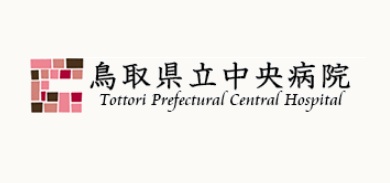SUMMARY
With its implementation of an electronic medical records (EMR) solution in use since 2005,Tottori Prefectural Chuo Hospital is a strong proponent of using IT to help deliver patient care and run its operations eciently. Now, the hospital is using IT even more advantageously to help multidisciplinary, interpractice teams communicate and collaborate in their care of patients. These teams, which typically consist of clinicians from up to eight di‑erent practice areas of the hospital, depend on highly coordinated access to information to do their jobs.
Earthquake crisis accelerates healthcare reform in Christchurch – by Dr. Nigel Millar“As a patient moves through the care cycle, it is vital for everyone on the care team to know what everyone else has done, is doing, or will be doing for that patient,” explains Dr. Riosuke Nemoto, Vice Director of Tottori Prefectural Chuo Hospital. Until recently,however, team members did not necessarily have equal access to that information.
To address the challeng e, Dr. Nemoto and his colleagues worked with Alphatec Solutions, a member of the Microsoft Partner Network with multiple Gold competencies, to deploy a business intelligence (BI) solution that would make the information in the EMR readily accessible to clinicians throughout the hospital. That solution, based on technologies in the Microsoft BI stack, is now used by the hospital’s 633 clinicians to streamline communications and optimize e‑ort. As a result, these skilled professionals can provide high-quality care for patients with fewer steps and in less time, for a rise in productivity that is projected to save the hospital US$375,000 a year and potentially help the hospital to reduce average patient stay by two or three days.
e, Dr. Nemoto and his colleagues worked with Alphatec Solutions, a member of the Microsoft Partner Network with multiple Gold competencies, to deploy a business intelligence (BI) solution that would make the information in the EMR readily accessible to clinicians throughout the hospital. That solution, based on technologies in the Microsoft BI stack, is now used by the hospital’s 633 clinicians to streamline communications and optimize e‑ort. As a result, these skilled professionals can provide high-quality care for patients with fewer steps and in less time, for a rise in productivity that is projected to save the hospital US$375,000 a year and potentially help the hospital to reduce average patient stay by two or three days.
THE FULL STORY
THE VITAL ROLE OF INTERPRACTICE COORDINATION
Established in 1950 and located in Totorri, the capital city of the Totorri Prefecture in Chugoku, a coastal region in southern Japan, Tottori Prefectural Chuo Hospital provides inpatient and outpatient care to a population of 250,000 people. Tottori Prefectural Chuo Hospital is renowned for its excellence in critical care and large cardiac vascular surgery.
To help maintain its reputation for clinical excellence, Tottori Prefectural Chuo Hospital makes extensive use of information technology, including an electronic medical records (EMR) solution installed in 2005. Along with his colleagues, Dr. Riosuke Nemoto, Vice Director of Tottori Prefectural Chuo Hospital, is continually seeking ways to extend that solution to help clinicians provide the best possible patient care. In 2010, Dr. Nemoto’s team saw an opportunity to enhance support for communication and collaboration among the interpractice clinical teams that are typical in the care of almost all patients at the hospital—and decided to do something about it.
“Clinicians serving a given patient often work in a team representing up to seven or eight di‑erent practice areas of the hospital,” Dr. Nemoto explains.
“They could be cardiologists, neurologists, and physical therapists caring for a stroke patient; oncologists, surgeons, and respiratory therapists caring for a lung-cancer patient;primary-care physicians, nutritionists, and laboratory technicians monitoring diet, medication, and activities of a diabetes patient; and so on.”
Whatever the illness or injury of the patient being treated, those clinicians must coordinate their care e‑orts with keen precision. “As a patient moves through the care cycle, it is vital for everyone on the care team to know what everyone else has done, is doing, or will be doing for that patient,” Dr. Nemoto says. “Depending on the illness or injury being treated, the team may be collaborating for days, weeks, or even months—and the information shared among the team members must be accurate, comprehensive, and up-to-the-minute in its timeliness.”
ACCESSIBLE DATA FOR STREAMLINED COLLABORATION
The hospital has long stored such information in its EMR solution, but the information was generally accessible by a limited number of sta‑ members at a given time.
Dr. Nemoto and his colleagues decided that the best way to change this was to deploy a business intelligence (BI) solution that could be accessed by any clinician in the hospital, from any client system, desktop computer, or mobile device. In selecting a BI platform, they briey considered products from Medi-System Solutions and Cybozu, but because of the team’s experience with Microsoft products and the compatibility of those products with their e-Carte EMR solution, they ultimately decided on the Microsoft BI stack. It includes Microsoft SQL Server 2008 R2 data management software,Microsoft SharePoint Server 2010, and the Windows Server 2008 R2 SP1 operating system with Remote Desktop Services.
For the project, Nemoto’s team engaged Alphatec Solutions, a Tokyo-based Microsoft Partner Network member with multiple Gold competencies, and began work in late 2011. In early 2012, the team deployed the BI solution—which is based on a template designed by Alphatec—for use by nearly 700 physicians, nurses, and other clinicians collaborating in interpractice teams. Those teams now use the BI solution to coordinate patient care from the doctor’s oce to patient registration, the surgery ward to recovery room, and beyond.
EASILY ACCESSIBLE INFORMATION FOR BETTER CARE
To illustrate how much the solution has helped to streamline and coordinate communications, Dr. Nemoto cites how the solution is helping to provide a highly e‑ective “critical information path” for physicians, nurses, and other clinicians to share essential information—the cornerstone of safe medical care.
For example, in long-term care for a diabetes patient, clinicians must have timely access to dietary intake and laboratory results.
“In the past, these results involved input from up to a couple of dozen people and required the clinicians to exchange multiple emails or messages,” Dr. Nemoto says. “Alternatively, the clinicians might have to nd an available EMR workstation to access the information, which could be a challenge at certain times of day. Now, they simply consult any workstation in the hospital.”
 PRODUCTIVITY SAVINGS OF $375,000 A YEAR
PRODUCTIVITY SAVINGS OF $375,000 A YEAR
Tottori Prefectural Chuo Hospital also uses the SharePoint portal that is part of the BI solution to streamline document control,enabling clinicians to easily access information from more than 350,000 pages of formerly paper-based documents. With this component, the hospital anticipates an annual savings of nearly 3,000 clinician-hours per year. In addition, the hospital will add a video-based e-learning component to the portal to help employees resume productivity upon returning from maternity leave or other extended absence.
Considering the savings in time and e‑ort not only in the scenarios described but in dozens of others like them, among hundreds of clinicians each day, Dr. Nemoto anticipates ameasurable rise in sta‑ productivity. “With the help of our BI solution, we estimate a productivity rise equivalent to JPY30 million [US$375,000] in yearly savings at Tottori Prefectural Chuo Hospital.”
Looking forward, Dr. Nemoto anticipates ongoing enhancements to the power and utility of the BI solution, thanks to the exibility of its template-based design.
“With this solution, we can help the hospital to more easily meet quality benchmarks, manage safety,and potentially reduce average patient stay—by as much as two or three days,” he says.



















